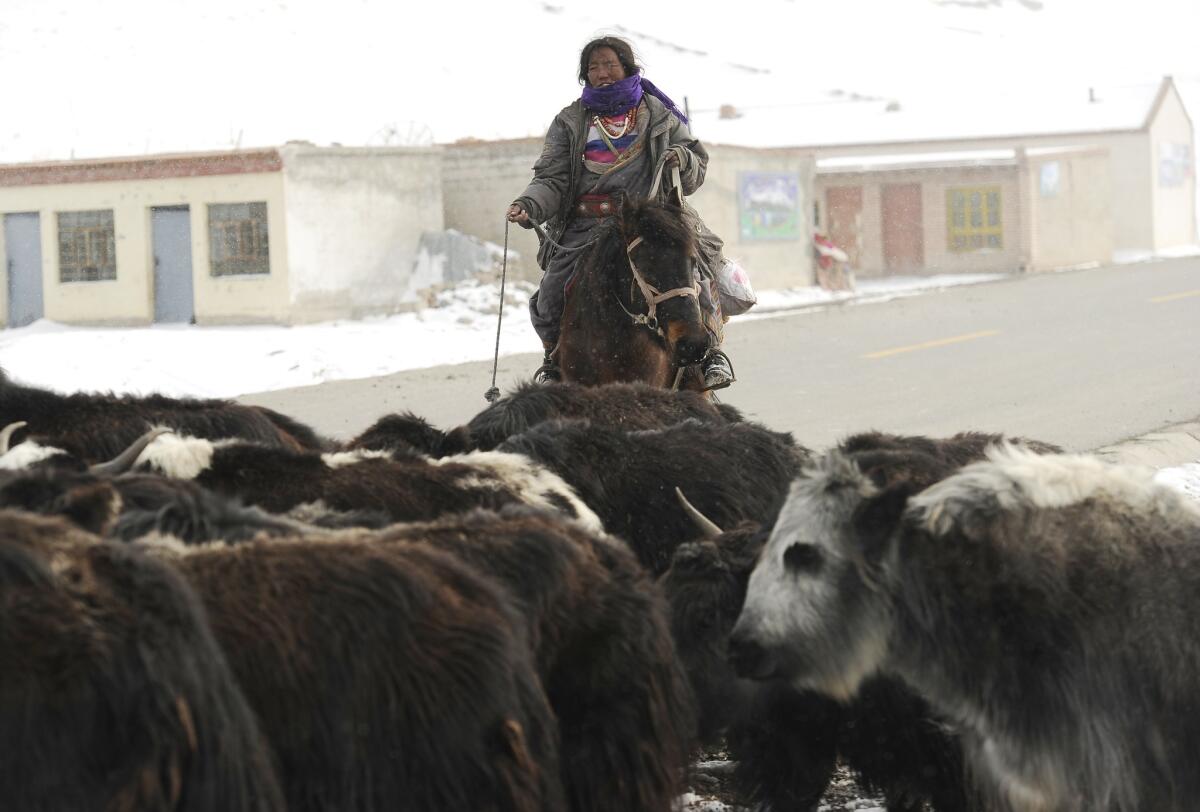U.S. ambassador to China on rare Tibet visit

XINING, China -- The U.S. ambassador to China, Gary Locke, paid a rare visit to Tibet this week as human rights advocates blasted the Chinese governmentâs policy of luring Tibetan nomads into concrete housing projects with little job opportunities.
In meetings with residents and officials, Locke stressed the need to preserve Tibetan culture and urged authorities to allow foreigners to travel more freely in the tightly controlled region, according to the Associated Press.
The Tibetan Autonomous Region, as it is known, has been mostly closed to western diplomats and journalists since an uprising in 2008 against Chinese rule. Lockeâs three-day visit to Lhasa, which concludes Friday, is the first time the U.S. Embassy has gotten approval for a visit since 2010, the embassy said.
Nearly 120 Tibetans have immolated themselves since 2009 in protests against Chinese rule.
A report released by Human Rights Watch said more than 2 million others had been lured into ânew socialist villagesâ since 2006 in one of the largest upheavals of the population since the 1950s.
âThe scale and speed at which the Tibetan rural population is being remodeled by mass rehousing and relocation policies are unprecedented in the post-Mao era,ââ said Sophie Richardson, China Director of the New York-based human rights group, in a statement Thursday.
According to the report, many Tibetans have been duped into giving up the herds of yak and sheep that traditionally provided their livelihood and settling in cheaply constructed housing projects. Although the housing is subsidized, the report found that the Tibetans bore 70% of the costs of the new homes, often signing loan documents they did not understand because of high illiteracy.
Meanwhile, the report stated that âthey are unable to compete in markets in which native Chinese-speaking laborers and entrepreneurs have a distinct advantage.ââ
âIt may be true that some Tibetans have benefited,â Richardson said. âThe majority have simply been forced to trade poor but stable livelihoods for the uncertainties of a cash economy in which they are often the weakest actors.â
The housing projects are being constructed not only in the Tibetan Autonomous Region, but also in Qinghai and Sichuan provinces, which are home to large Tibetan populations.
South of the Qinghai provincial capital of Xining, the new villages look like vast gulags made up of identical, tightly packed blocks of concrete and brick. Although the Chinese government claims they are more hygienic and modern, many of the villages lack adequate toilets and do not have a reliable electricity supply.
Human Rights Watch said in its report that it had not found evidence that Tibetans were forced into the projects, but that they were easily intimidated into relocating.
ALSO:
Edward Snowden: Not the first to be caught in airport limbo
In Africa, Obama reflects on Nelson Mandelaâs role in his life
Nelson Mandela âstill there,â responding to family, daughter says
More to Read
Sign up for Essential California
The most important California stories and recommendations in your inbox every morning.
You may occasionally receive promotional content from the Los Angeles Times.










